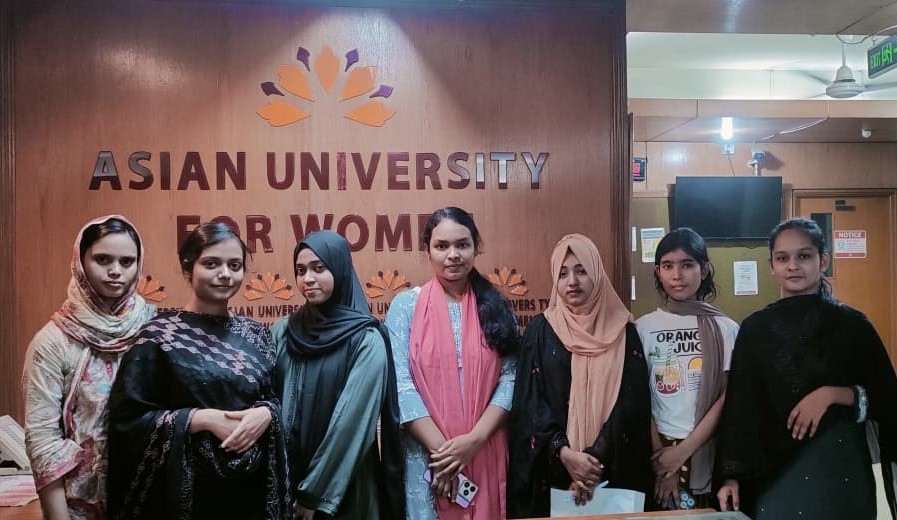Processed Food Industry of Bangladesh Beckons High Export
By Ahmed Sharif
Sharika Sandil is newly married. Her husband works for a multinational company, while she is engaged with her MBA. Like many other young couples living in Dhaka, they have less time for everything. Looking for convenience, she looks towards superstores near her home. And that’s where she got introduced to a variety of products, especially food products. ‘Products are not visible at normal retail stores. If a new product comes out, how would I know that they have it in their store? Superstores display all products in front of me, and I can spend a long time looking at products and can compare them,’ she said. She also said that after discovering new products at superstores, she again looked for those at other typical stores. Superstores have introduced a new level of convenience to these busy consumers of today. And various marketers have taken the opportunity to come up with convenience products that go with this new lifestyle. Some of the biggest participants in this new marketing game are processed food companies. Starting from packaged groceries and spices to frozen food items, snacks and dairy products, this is one of the most vibrant marketing areas in this growing economy.
The glitz and glitters
The posh end of Bangladeshi agriculture goods can be seen at superstores Dhaka and some other big cities. Shelves are being filled with food products coming out of the production lines of local factories, utilizing agro-products produced locally or at least processed locally. New products are being added every other day. ‘Just three years back, when our store started, there were only three brands in the market; today there are seven,’ said Habib, Floor-in-Charge at Carre Family, a superstore at Mohammadpur area of Dhaka City, referring to frozen food items. ‘We had to add and expand a completely new section to accommodate the huge number of (frozen food) items,’ he added. There was a time when foreign brands used to dominate here. Being of high price, they mostly attracted local elites. But things have changed dramatically over the last decade or so. ‘Local producers have observed that there is a market for higher-end imported processed food in Bangladesh. From there, they have realized that there is a market that can be served with locally produced items,’ said Md Iktekar Hossain Sohag, Sr Executive, Brand at Romania Food & Beverage Ltd. He also attributed the rise in local demand to big population and higher purchase capacity. He thinks that higher purchase capacity has pushed consumers to look for better quality food items, and that packaged food is now being more and more associated with better quality. Sharika Sandil agrees that packaging has a role to play to gain her confidence. ‘I bought some sausages a few days back after being impressed by the posh look of the packaging,’ she said. Though she failed to remember the brand name, she thinks that reputed brands come up with better packaging that goes a long way to gain her confidence. And it now seems that frozen food companies like Golden Harvest, Harvest Rich, Pran, CP, BRAC, Aftab, Saint Martin Group, Bengal Meat, Kazi Farms and others are listening. Md Kamrul Islam Chowdhury, Brand Manager at Six Seasons Food & Beverage thinks, ‘Packaging in very important for brand aware consumers. A lucrative packaging is usually associated with good brands. People’s perception says that good looks are a prerequisite of good quality.’
The hard reality of crossing the border
But in terms of quality, have our products reached a status in world stage? Not necessarily. Industry people think that we are still some distance away from equaling technology standards prevailing in the Western world. ‘We have compared our products with that of Europe and Latin America. Their products differ a great deal from ours in terms of taste because of difference in quality of machinery. Their packaging is also of much better quality. We had designed a pack and printed it locally as well as in Europe. It was quite obvious that their printing quality was a great deal better than ours,’ said Kamrul Islam Chowdhury of Six Seasons. Quality is also related to the willingness of the consumers to pay, said Iktekar Hossain Sohag of Romania. He thinks that only the local producers with a certain level of quality are able to export their products. Producers are willing to invest behind higher quality food that would be sold at a higher price abroad. ‘There are many international brands competing for each market. To survive there, we have no other way but to invest behind quality,’ he said. To upgrade quality of products for international market, raw materials are being acquired more selectively and packaging materials are also being selected prioritizing quality. But because of the development of some food processing machinery in Bangladesh, it is increasingly becoming possible for local food producers to offer products of certain quality to local consumers. Packaging machineries are also increasingly being produced locally, which do not offer the longevity of international machinery, but produce packaging of similar quality. Quality of raw materials both for products and for packaging is dictating the quality of ultimate output in this industry. Simply put, higher quality raw materials would produce better quality product.
The quality game
One of the big challenges in making our agro-products internationally competitive is ensuring the quality of raw materials. Industry concerned think that high usage of agro-chemicals, lack of sanitary facilities in rural areas and proximity of some agricultural areas to cities where pollution level is high are some of the major areas that need to be worked on to ensure better inputs for this industry. ‘Vegetables produced at Savar and North Bengal may look similar in freshness. But the ones produced at Savar contain much higher level of toxic lead because of proximity to Dhaka,’ said Iktekar Hossain Sohag of Romania. He mentioned that his exposure to a training organized by Asian Productivity Organization (APO) has opened his eyes to the many facets of quality maintenance in agro-food processing. A lot of the companies are also going for international certification to explore foreign markets. A recent venture to upgrade Bangladesh Standards and Testing Institution (BSTI) food testing laboratory with Indian help under the Line of Credit (LoC) agreement to standardize BSTI certification can potentially go a long way to help Bangladeshi food products become more competitive in Indian markets. Currently, attaining clearance certificates from Indian authorities kill enough time at the border to discourage processed food export to India. News of upcoming BSTI upgrade encourages industry people, but some are still apprehensive regarding the serving (or the lack there of) mentality of the BSTI people.
Put it in a package
Although processed food items have a good market abroad, the local market is still the focus of attention for most producers. An estimated growth rate of 15-20% over the last one decade made this one of the most lucrative markets to invest in. And one of those big investment areas is packaged grocery – mainly atta, flour (maida), semolina (suji). Within just a few years, a large portion of the un-organized market for these items had been replaced by packaged items produced by large companies with big investments. To prove that this market is still a growth hub, one of the giants of the Bangladesh business scene, Bashundhara Group, just hit the market with a Tk 2,000 crore 1,000 ton-per-day capacity plant on the banks of the River Buriganga to produce atta, flour and suji. Existing companies like City Group (Teer brand), Meghna Group (Fresh brand), TK Group (Pusti brand), ACI (Pure brand), Ifad and others are likely to take note of this to be more competitive. Consumers may get benefited from the resulting competition, provided that the government keeps the whip ready for any kind of price manipulation. Similar changes took place in packaged spices. Square Group (Radhuni brand), Pran, BD Foods, ACI (Pure brand), Partex Group (Danish and Rani brands), Aftab, Arku, Meghna Group (Fresh brand), and many others have brought convenience to the consumers, especially the urban busy consumers. Convenience-seeking consumers like Sharika Sandil think, ‘Some of the older generation may still be relying on their own spice grinding process. But their next generation would certainly move to the packaged spices.’ Convenience-seekers gave birth to a market for mixed spices. ‘It may not have the taste of spices that my mother used to prepare on special occasions spending a lot of time. But this does the job for me considering the time it saves,’ she said. All types of mixed spices found their way into consumer hands – Biriani masala, tandoori masala, kabab masala, fish masala, meat masala, halim mix, khir mix, and what not. Though negative publicity in recent times regarding packaged spices did much harm, industry concerned think that it is not likely to make consumers leave the whole category. Showing production processes in TV advertisements are having some positive effects, they say.
Shift in food habit
It is not just convenience-seeking, some industry people think that a shift in food habit among consumers have helped to establish some food products. Snacks items filled the afternoon-evening gap. ‘There was a time when people were only depending on rice. But now there is a need for more diverse and new kind of food,’ said Kamrul Islam Chowdhury of Six Seasons. Chanachur, biscuits, chips, daal bhaja, peas, mango bar, chutney, and many other products are coming up on a regular basis. This highly competitive market has Bombay Sweets, Pran, Partex Group (Danish), Bengal Group (Romania), Quasem Food (Sun), Ifad, Square Group (Ruchi), Six Seasons, Haque, BD Foods, Olympic, Goldmark, and many other players. Noodle is another product that elbows into this segment, though it has more diversity in its consumption. Nestle (Maggi), Pran (Mr Noodles), Colola, Shejan, Ifad, Mama and many others have made this a happening market. New Zealand Dairy was the latest entrant in this market in October 2014 with their ‘Doodles’ and ‘Poppers’ brands. Some frozen food items have taken a very important place in this happening segment. Busy consumers like Sharika Sandil find convenience in this, ‘Some of the frozen items are very effective as evening snacks. Samosa, singara, rolls, French fries, and many other frozen products are now available, which make entertaining guests very easy.’ Chicken and meat products sneak in here to compete with other mostly vegetarian products. And do not forget to add the taste items like tomato sauce, chili sauce, garlic sauce, and others. Pickles would also find their way somewhere around here. The diversity of products in this market segment is evidence of the market’s maturity. People are no longer happy with basic products, and producers are always trying to discover areas of differentiation with new products, flavours, advertising, packaging, promotional campaigns and other marketing tricks.
Dairy products – waiting for something?
The one area of processed food that has not yet seen an explosion is the dairy sector. Unlike the Indian market, Bangladeshi market is heavily dependent on imported milk powder. Local milk producers have not flourished like other processed food. Milk Vita, BRAC (Aarong), Pran, Akij (Farm Fresh), Abdul Monem (Amo Milk), RD Milk, and some others keeping this sector going. But considering the dominance of imported milk powders in the market, it can be said that the sector needs a lot more than just increase in production to make its position strong.
The agricultural revolution in Bangladesh over the last two to three decades has ushered a new era of opportunities for the country. A stable economic growth has created a dynamic local market that has built the base for competing in the international stage. There are many areas that still need to be improved. But looking back at the journey, we can find inspiration for the upcoming battle. Industry concerned think that the way this industry is currently progressing, Bangladeshi processed food would attain a strong position in the international market within a decade.















